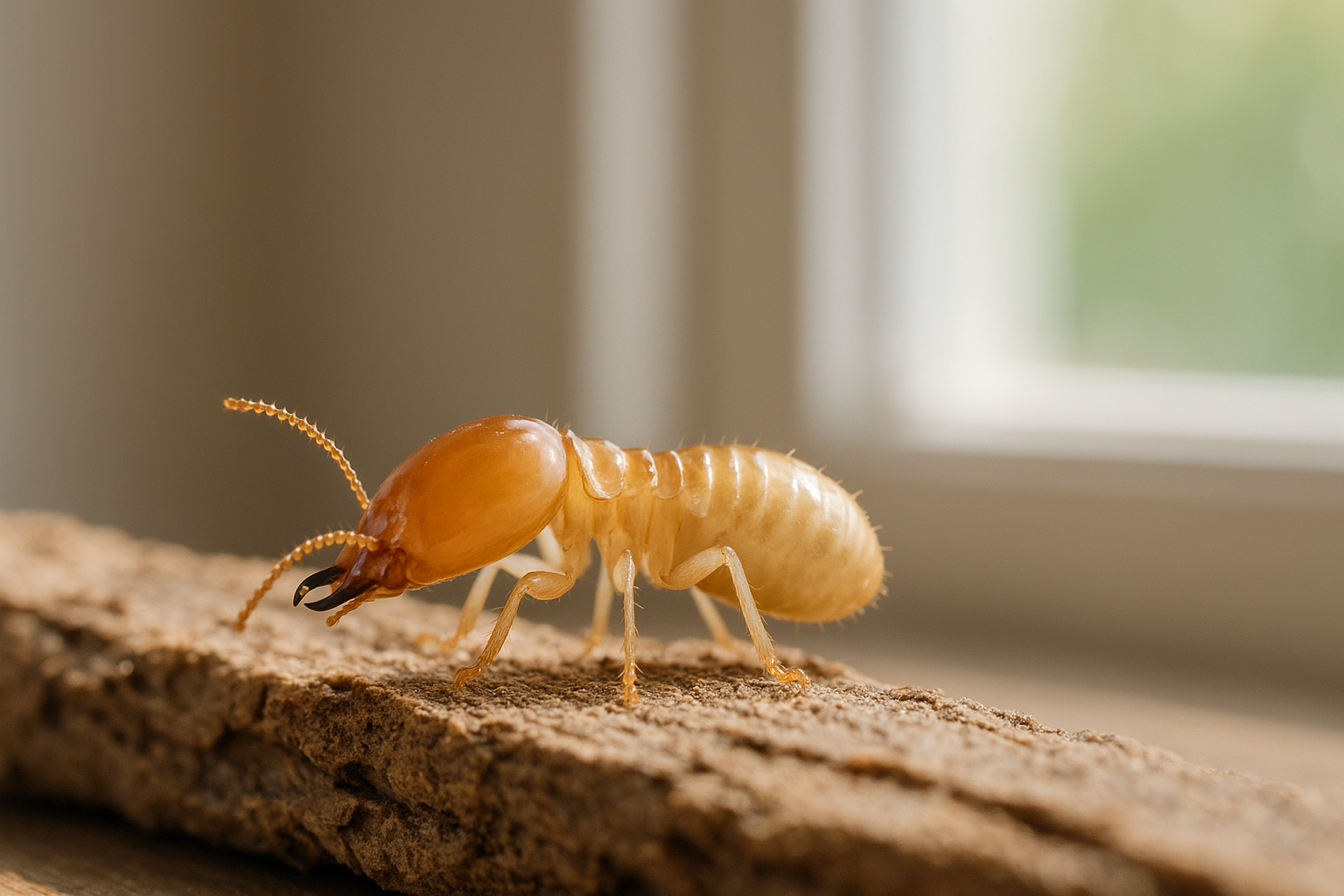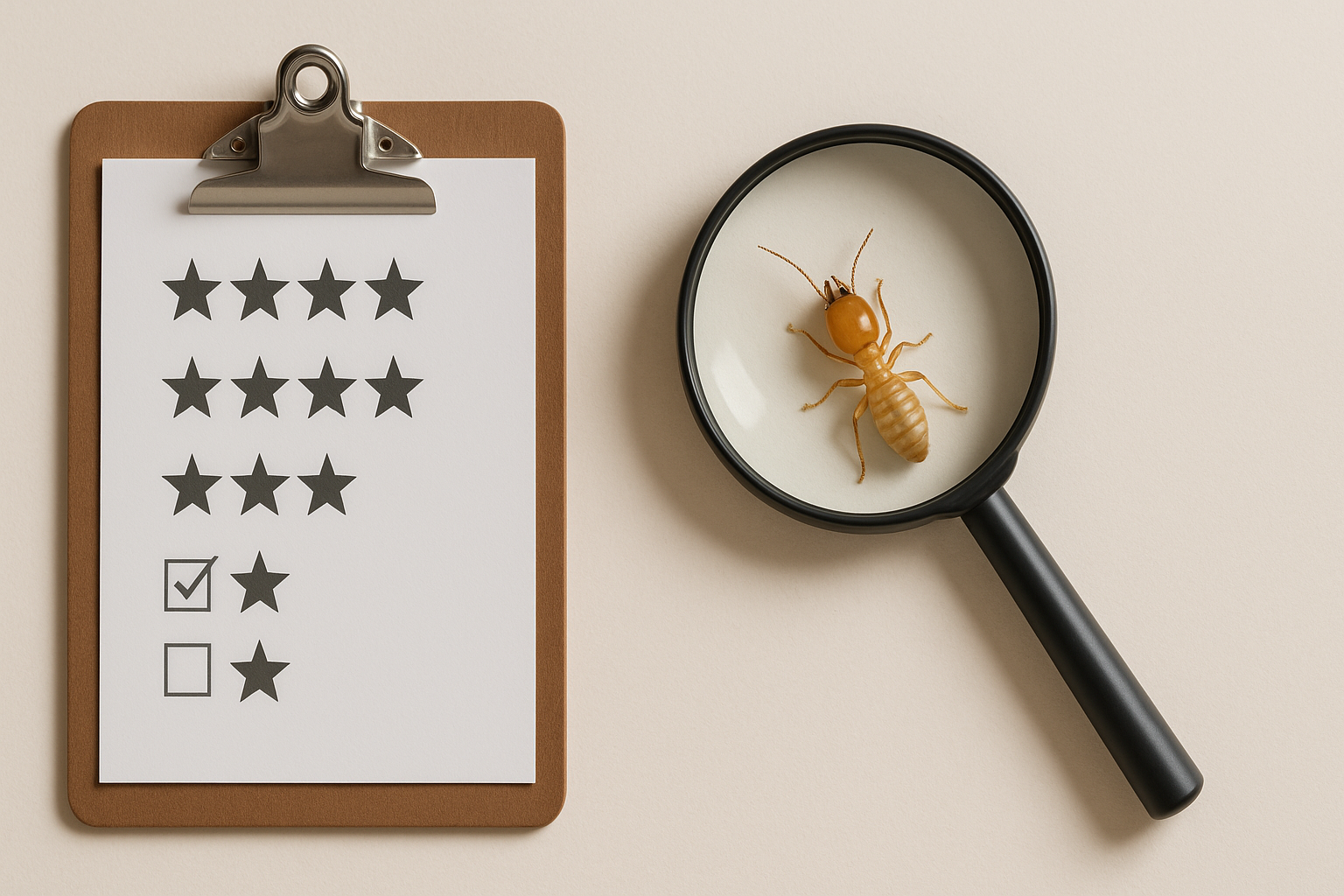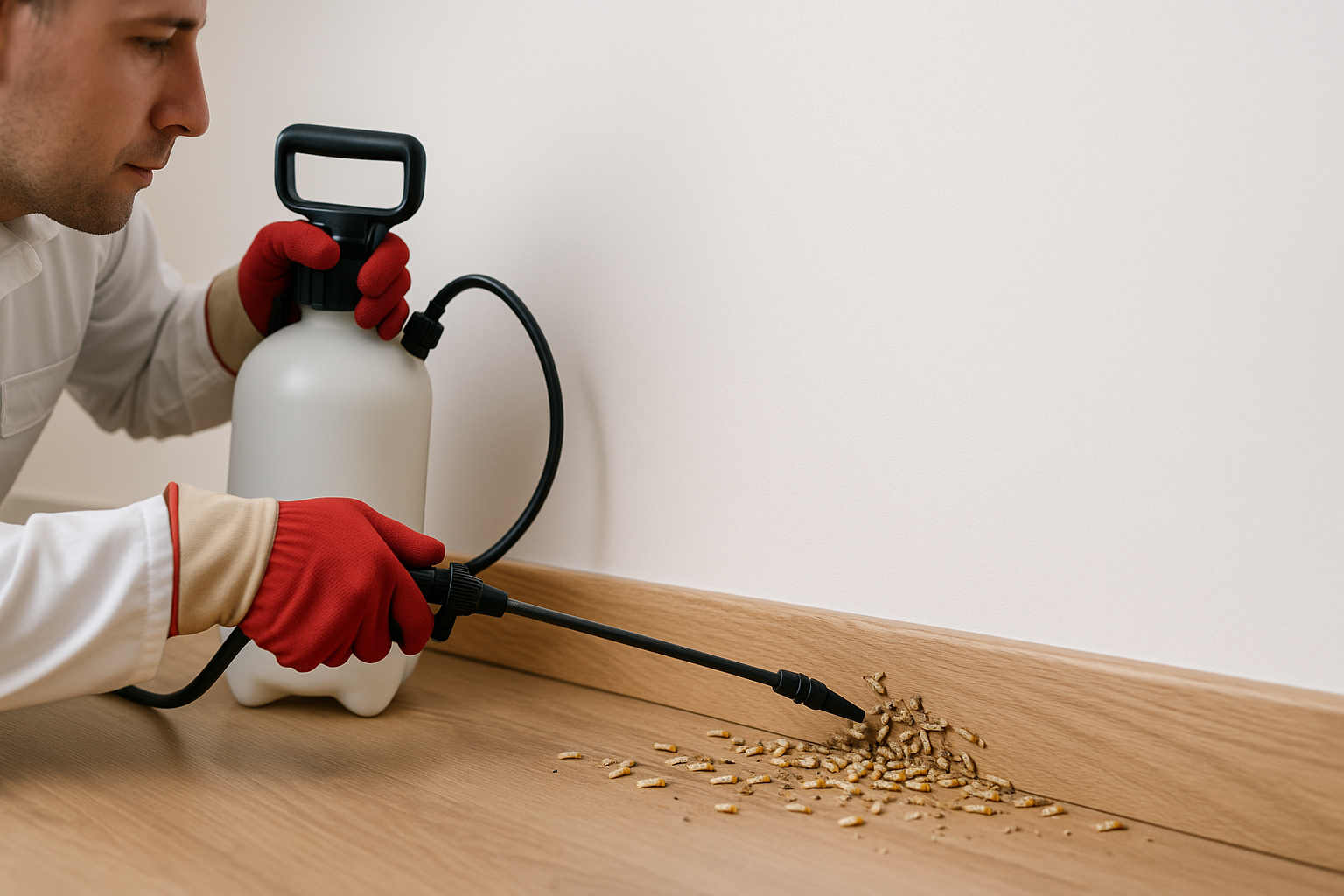Table of Contents
Understanding Termite Biology Al Khawaneej 2
Termite biology Al Khawaneej 2 is a complex subject crucial for homeowners and pest control professionals aiming to prevent and control infestations effectively. The termite species prevalent in this Dubai locality show unique biological and behavioral traits that directly influence inspection strategies.
Termites belong to the order Blattodea and are social insects living in colonies with a caste system of workers, soldiers, and reproductives. Their biology includes a lifecycle from eggs to nymphs and adult forms, some of which develop wings to swarm and establish new colonies. Understanding these biological stages helps in detecting active infestations, especially given the nuances of **termite biology Al Khawaneej 2** in the humid and warm climate.
The termites’ feeding habits focus on cellulose materials such as wood, paper products, and even some plastics containing cellulose. This dietary preference allows them to disguise their presence inside buildings and wooden structures. Understanding these feeding habits, a key aspect of **termite biology Al Khawaneej 2**, is crucial because early detection through informed inspection is the most effective prevention.
Common Termites in Al Khawaneej 2
In Al Khawaneej 2, the climate fosters the presence of specific termite species. The most common types include Subterranean termites and Drywood termites, each with distinct biology and behavior relevant to local pest control efforts.
- Subterranean Termites: These termites build extensive underground colonies and often enter homes through soil-to-wood contact. They require moisture to survive, which they commonly find in irrigation systems or leak-prone areas typical of residential settings in Dubai.
- Drywood Termites: Unlike subterranean species, drywood termites do not require soil contact and live inside the wood itself. Their biology enables them to thrive in dry, wooden structures common in Dubai’s residential buildings, making them difficult to detect without thorough inspection.
Understanding these species’ biological traits is critical for designing tailored inspection plans and treatment methods that address the specific infestation challenges faced by Al Khawaneej 2 residents. This deeper insight into **termite biology Al Khawaneej 2** is paramount for effective pest management.
How to Perform Termite Inspections in Al Khawaneej 2
Executing a thorough termite inspection based on termite biology Al Khawaneej 2 knowledge is essential to timely identify and mitigate damage. Below is an actionable guide on performing inspections effectively in this area:
1. Preparation and Tools
Before starting, gather necessary inspection tools such as a flashlight, moisture meter, screwdriver, and magnifying glass. Awareness of Al Khawaneej 2’s climate helps anticipate termite behavior during different seasons.
2. Exterior Inspection
Check all perimeter structures, focusing on contact points between soil and wood, irrigation systems, and any signs of mud tubes that subterranean termites build for travel and protection. Pay attention to cracks in foundations, exterior walls, and wooden fences.
3. Interior Inspection
Inside, inspect wooden furniture, floorboards, door and window frames closely. Use a screwdriver to probe for hollow sounds indicating internal damage. Look for discarded wings, speckled droppings (frass), or slight mud-like deposits signaling termite presence.
4. Use Moisture Detection
Termite biology Al Khawaneej 2 indicates their preference for moisture-rich environments. Employing moisture meters near plumbing fixtures, water heaters, and air conditioning units will reveal hidden dampness that attracts termites.
5. Document and Plan
Record all findings systematically, noting areas of concern for treatment or further monitoring. Contacting professionals like Saniex Dubai, specialized in termite management, ensures expert guidance that respects local environmental and regulatory standards.
FAQ on Termite Biology Al Khawaneej 2
What signs indicate termite infestations in Al Khawaneej 2?
Common signs include mud tubes on walls, wings shed near doors or windows, hollow-sounding wood, and discoloration or blistering of paint. Due to termite biology Al Khawaneej 2 involves hidden activity, professional inspections are often needed to confirm infestations.
How often should termite inspections be conducted?
Experts recommend at least annual inspections, especially in Al Khawaneej 2 where the warm climate promotes year-round termite activity. Early detection is critical to avoid major property damage.
Are termite treatments safe for residents and pets?
Modern termite treatments in Dubai are designed to be environmentally safe, following Dubai Municipality guidelines. Professional pest control services will use approved chemicals and techniques minimizing health risks while effectively eradicating termites.
Can termites cause structural damage quickly?
Yes, termite biology Al Khawaneej 2 emphasizes their ability to consume wood relentlessly once inside. Damage can accumulate rapidly within months to years if left untreated.
How does Dubai Municipality regulate termite control?
Dubai Municipality requires licensed pest control operators to handle termite treatments. Visit the official pest control section for regulations and approved methods to ensure compliance and safety.
Best Practices for Termite Management in Al Khawaneej 2
Leveraging deep understanding of termite biology Al Khawaneej 2, the following best practices help maintain termite-free premises and minimize risks effectively.
- Maintain Dry Conditions: Repair leaks and prevent water accumulation near the building foundation to create unfavourable conditions for subterranean termites.
- Remove Wood Debris: Keep the yard clear of wood scraps, stumps, and cellulose-based trash that attract termites.
- Use Physical Barriers: Incorporate termite shields and sand barriers during construction consistent with Dubai’s safety codes.
- Schedule Regular Inspections: Plan routine checks with licensed pest control professionals to catch early infestations.
- Educate Residents: Awareness of termite biology Al Khawaneej 2 helps residents spot early damage and report promptly.
- Professional Treatments: When infestation occurs, use registered termite control services to apply effective, eco-friendly treatments aligned with Dubai’s environmental standards.
| Inspection Method | Purpose | Tip |
|---|---|---|
| Visual Inspection | Identify external signs like mud tubes, winged termites | Check during early morning or evening swarming periods |
| Moisture Measurement | Detect damp areas favorable to termites | Focus near plumbing and AC units |
| Probing Wood | Assess structural integrity and hidden damage | Use screwdriver gently to avoid excessive damage |
Conclusion and Call to Action
Mastering termite biology Al Khawaneej 2 is fundamental for effective termite inspections and management in this Dubai locality. With climate conditions that promote termite activity year-round, staying proactive through regular inspections and preventive actions is the smartest choice for property owners.
For expert assistance and guaranteed termite control services adhering to Dubai Municipality standards, trust Saniex Dubai. Do not wait for visible damage—schedule your termite inspection today and safeguard your home or business from costly termite damage.
Understanding Termite Biology Al Khawaneej 2: Insights into Local Termite Behavior and Structure
Termite infestations pose significant challenges for property owners throughout Dubai, especially in rapidly developing communities like Al Khawaneej 2. A thorough understanding of termite biology Al Khawaneej 2 offers crucial insights into why these insects thrive in this area and how they affect local structures. These subterranean wood-eating pests have highly organized colonies with unique biological traits that determine their survival strategies, reproduction, and damaging potential. By delving deeper into termite biology specific to Al Khawaneej 2, residents, builders, and pest management professionals can develop more effective prevention and control measures tailored to Dubai’s environment.
Termite Colony Structure and Roles in Al Khawaneej 2
Termite colonies in Al Khawaneej 2, similar to those found across Dubai, exhibit a complex social structure divided into distinct castes. Each caste plays a specialized role essential to the colony’s survival. These castes typically include workers, soldiers, reproductives (king and queen), and alates (winged termites that help form new colonies). Understanding their role helps explain their biology and behavior in this particular locality, shedding light on the broader **termite biology Al Khawaneej 2**.
- Workers: These termites are the backbone of the colony. Responsible for foraging, nest construction, and feeding other castes, workers are often the most numerous and are blind, relying on pheromones to navigate through the dark tunnels common in Al Khawaneej 2’s soil and structures.
- Soldiers: The protectors of the colony, soldiers have larger heads and mandibles designed for defense against predators like ants. Though they cannot feed themselves, they rely on workers for sustenance. Their presence is a key biological indicator of an active, thriving colony.
- Reproductives (King and Queen): Central to colony growth, these termites reside deep within the nest. The queen can lay thousands of eggs daily, representing the heart of termite reproduction biology in Al Khawaneej 2. Their longevity allows colonies to remain active for years or even decades if unchallenged.
- Alates: These winged termites leave the nest during seasonal flights to mate and start new colonies. Monitoring their swarming behavior helps gauge infestation levels locally.
Each caste adapts to the climatic conditions and urban landscape of Al Khawaneej 2. This adaptability is a key aspect of **termite biology Al Khawaneej 2**. Moist soils around irrigation systems and landscaped gardens provide ideal conditions, while the plentiful use of wood and cellulose-based construction materials enables thriving colonies.
Termite Life Cycle and Reproductive Biology in Al Khawaneej 2
The life cycle of termites in Al Khawaneej 2 follows several well-defined stages: egg, nymph, and adult, with caste differentiation occurring as the larvae mature. This cycle, a core component of **termite biology Al Khawaneej 2**, is particularly influenced by Dubai’s climate and local environmental factors.
Eggs laid by the queen hatch into nymphs, which develop into different castes through a series of molts. The reproductive biology of termites here is adapted to Dubai’s hot and humid conditions, with colony expansion often peaking after the rare but impactful rainfalls common in the region. This aspect of **termite biology Al Khawaneej 2** highlights their resilience.
Swarms (alates) typically emerge in the early months of the year—when humidity rises after Dubai’s mild winter—facilitating the reproduction cycle and spreading infestations. Recognizing the timing and biological cues of these swarms is essential for targeting termite control and prevention at the optimal time, especially when considering **termite biology Al Khawaneej 2**.
Moreover, new colonies are often established in soil-rich areas with abundant moisture and food sources, such as landscaped gardens and irrigation-rich spots typical of Al Khawaneej 2’s master-planned community layout. This reproductive strategy ensures that termite populations expand rapidly within residential and commercial spaces.
Environmental Adaptations of Termites in Al Khawaneej 2
Termite biology Al Khawaneej 2 includes notable adaptations that enable them to flourish in the hot, arid climate of Dubai. Unlike termites in more temperate regions, these insects have evolved strategies to maintain moisture, protect the colony from extreme heat, and efficiently source cellulose material despite the challenging environment.
- Moisture Retention: Termites construct extensive underground tunnel networks that maintain humidity, shielding them from Dubai’s intense sun and dry air. These tunnels also connect to damp wood or cellulose materials found in building frameworks and landscaping.
- Temperature Regulation: Subterranean nests help stabilize termite colonies against the fluctuating temperatures common in Al Khawaneej 2. The deeper nest layers remain cooler and more humid, essential for brood development and colony health.
- Nutrient Utilization: Termites digest cellulose through symbiotic protozoa and bacteria in their guts, enabling them to consume a wide range of organic materials common to Dubai’s urban environment, including wooden furniture, insulation materials, and paper products.
These adaptations not only enhance termite survival but also complicate eradication efforts. Pest management strategies in Dubai must consider these biological factors, which are integral to **termite biology Al Khawaneej 2**, to effectively protect structures against infestation and damage.
Impact of Termite Biology on Structural Integrity: Challenges in Al Khawaneej 2 Housing
The **termite biology Al Khawaneej 2** has direct consequences for local construction and building maintenance. Termites feed primarily on cellulose, found in wood and other organic materials widely used in construction. This biological behavior leads to hidden and often extensive damage before signs become visible.
In new and established homes in Al Khawaneej 2, termites can infiltrate wooden framework, flooring, and furniture, compromising structural integrity and increasing the need for costly repairs. The biological lifecycle ensures continuous colony growth, meaning untreated infestations worsen over time.
In particular, the presence of termite soldiers and workers inside walls or under floorboards often precedes the detection of mud tubes or other infestation signs. These mud tubes serve as protective pathways for termites traveling above ground to food sources, and their discovery is a critical part of termite biology recognition for pest control experts.
Understanding this biological behavior enables building owners and pest control professionals to apply proactive inspection routines aligned with Dubai Municipality’s building and pest control standards. Early detection based on biological indicators reduces the overall structural risk and is strongly recommended.
Applying Local Knowledge for Effective Termite Management
Incorporating termite biology Al Khawaneej 2 into pest management practices means aligning strategies with Dubai-specific environmental conditions and regulatory standards. The Dubai Municipality guidelines for pest control emphasize integrated pest management (IPM) approaches, which rely heavily on a deep understanding of termite biology specific to local habitats.
- Regular Inspections: Schedule inspections focusing on likely colony locations such as irrigated landscape areas, wooden structures, and near water plumbing systems.
- Moisture Control: Reduce excess moisture from irrigation and plumbing leaks, since termites rely on moisture to maintain their nests.
- Physical Barriers: Install materials that deter termite penetration around building foundations as recommended by Dubai Municipality pest prevention codes.
- Timely Chemical Treatments: Use termiticides approved by Dubai’s Ministry of Health and Prevention (MOHAP) targeting specific caste vulnerabilities, particularly workers and reproductives.
- Educating Residents: Spread knowledge about biological signs such as mud tubes, swarming alates, and damaged wood to encourage early reporting.
These measures, combined with the biological understanding of termites in Al Khawaneej 2, form the foundation of effective termite management that minimizes property damage and protects investments.
Conclusion
A comprehensive grasp of termite biology Al Khawaneej 2 not only illuminates why termite infestations persist in this Dubai community but also empowers stakeholders to implement targeted, biology-driven control methods. From appreciating termite caste roles and reproductive cycles to recognizing how these insects exploit Dubai’s environmental conditions, this biological insight is crucial for long-term prevention and remediation. Aligning this biological knowledge with Dubai Municipality and MOHAP standards ensures pest management efforts remain sustainable, safe, and highly effective throughout Al Khawaneej 2 and other Dubai neighborhoods.





